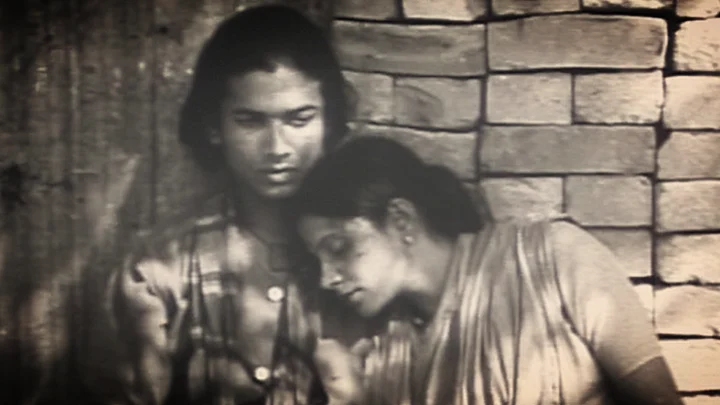It’s a film that begins with desolate yet hopeful lines written by revolutionary poet Faiz Ahmad Faiz.
It’s a film that was directed by AJ Kardar, produced by Nauman Taseer, and based on Manik Bandopadhyay’s Bengali novel Padma Nadir Majhi.
It’s the Pakistani film you will miss at the Jio MAMI Mumbai film festival – Jago Hua Savera.
About Fishermen, With a Neo-Realist Touch
Jago Hua Savera, popularly known in the West by its English name Day Shall Dawn, is an attempt at modernist cinematic realism, weaving together the everyday struggles and stories of East Bengali fisherfolk.
Released in 1959, the newly-restored black and white Pakistani classic was to be screened at MAMI. It was also recently screened at Cannes.
Encapsulating the agonies and everyday-ness of impoverished fishermen on the banks of a river that falls in what today is called Bangladesh, the film was poet Faiz Ahmad Faiz’s only filmed screenplay. Shot by German-born British cameraman Walter Lassally, the film starred Tripti Mitra, Zurain Rakshi, Khan Ataur Rahman, Kazi Khaliq and Maina Latif.
Opening with tracking shots of the Meghna river, the film slowly moves into a world we know too well – that of drudgery, poverty and debt. Mian (Zurain) and his wife (Shamsun Nihar) live hand-to-mouth from his limited earnings. And while his wife delivers an under-weight baby, his sister-in-law Mala (Tripti Mitra) catches the eye of two men – Kasim (Anees) and the moneylender Lal Mian (Kazi Khaliq).
The film marked Pakistan’s first-ever entry for the Oscar in the Best Foreign Language Film category. With much of Pakistan’s cinematic heritage destroyed since then, this film was successfully restored after over six decades.
The Son Who Brought it Alive
The film marked the debut of its writer, producer and director. It was also barely consumed in its country of origin, for it was heavily censured by the then Pakistani government.
The film’s use of neo-realist cinematic elements, non-actors, naturalistic acting and a socialist philosophy forming the backbone of the film became reasons why the military dictatorship under Ayub Khan cracked down on it.
The film’s association with Faiz, who was well known for his left-leaning sympathies, also became a reason why Khan told Nauman Taseer to shelve the release.
Much of the credit for the film re-appearing goes to Anjum Taseer, son of Nauman, who rescued the film from obscurity. Taseer meticulously dug up the remaining original copies of the film, to put together a version that could be screened.
This led to the re-emergence of prints from storage in France, London and Karachi. After a year of restoring the film “frame by frame”, Taseer said that he did it for “Pakistan as much as my father.”
The shooting for the film commenced in Saitnol, a fishing village on the river’s banks, in April 1958, reported Scroll. It also quotes Taseer as saying that “prefabricated hutments, tents and house-boats were assembled to house the unit.”
“With the exception of one artiste, every other member of the cast was appearing before the camera for the first time…The entire film was shot in location in a minimum of time – 48 days – and with the barest of equipment. A hand-held camera had to take place of a dolly throughout the shooting, a blimp was not available.”
The Indian Connection
Akhtar Jung Kardar, the director of the film, was the brother of Indian filmmaker Abdur Rashid Kardar. After the bloody partition of 1947, the family split into two, with Akhtar staying back in Lahore, and Abdur moving to Mumbai.
Akhtar was said to have been inspired by the phase of Italian neo-realism, asking Faiz to pen down a screenplay based on Bandopadhyay’s novel, which according to Faiz’s daughter was his favourite.
“My father worked very hard on the script. He read the novel and discussed it at great length with the director about how to extract the cinematic aspects. My father was very passionate and knowledgeable about music and so was Nauman Taseer, and their interest is reflected in the film,” Scroll quoted Salima Hashmi as saying.
(Source: Scroll and The Guardian)
